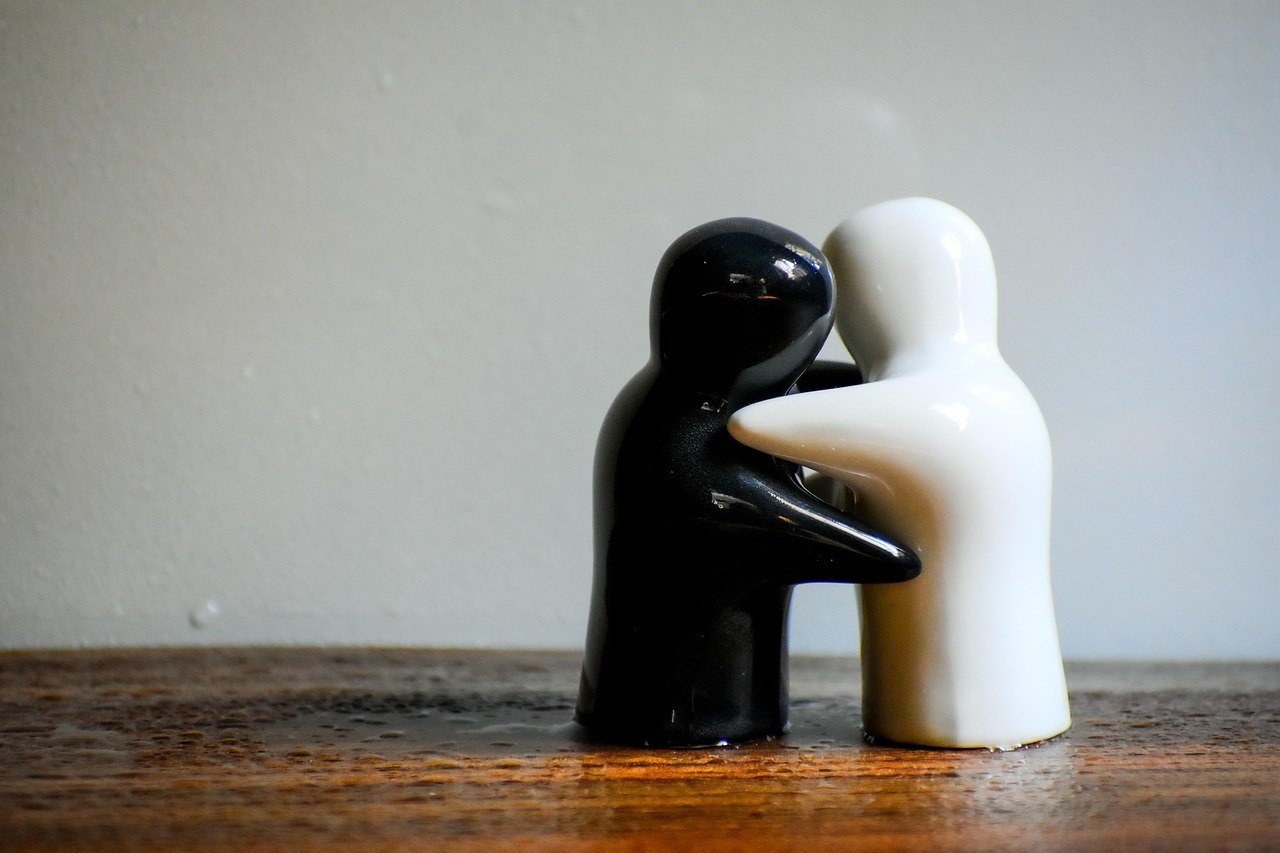Love is supposed to feel like home – warm, steady and welcoming. Yet when doubts creep in and your chest tightens for no clear reason, the comfort of closeness can turn into a maze of second-guessing. That spiral has a name: relationship insecurity. It can make a shared future look uncertain, everyday texts feel like tests, and affection seem conditional. You are not broken for feeling this way; you are noticing a pattern that can be understood and changed. This guide reframes the experience, shows where the unease comes from and offers grounded ways to rebuild trust in yourself and your bond.
What insecurity feels like from the inside
Relationship insecurity does not always wear a dramatic mask. Sometimes it is quiet – a knot in your stomach when a reply takes longer than usual, a reflex to scan your partner’s social media, a habit of replaying conversations to hunt for hidden meanings. Other times, it erupts as jealousy, suspicion, or a sudden urge to pull away before you can be left. The paradox is painful: you might love deeply while anticipating abandonment, and that tension can generate behaviors that accidentally push intimacy away. Naming it as relationship insecurity is the first step toward loosening its grip.
Why it shows up in otherwise loving bonds
There is rarely a single culprit. Relationship insecurity is more like a web of influences that tug on each other. Understanding the strands helps you decide what you can change and what you must accept.

- Low self-regard. When your inner voice whispers that you’re not enough, your partner’s neutral choices can feel like rejection. If you privately doubt your worth, compliments slide off and small frictions feel enormous – classic fuel for relationship insecurity.
- Old wounds that never healed. Betrayals, chaotic family dynamics, or past criticism can sensitize you to risk. A present-day misunderstanding then triggers yesterday’s pain, making relationship insecurity surge even when the current moment is safe.
- Clashing ideas of success. If you measure worth by milestones – career, savings, achievements – and believe you are “behind,” your partner’s wins may inadvertently sting. Comparison magnifies relationship insecurity by telling you you’re failing a test that does not exist.
- Ambiguous behavior from your partner. Most people are not mind readers. If love is expressed differently – say, through practical help rather than words – you may miss it and assume a deficit. Mixed signals or avoidant habits can intensify relationship insecurity, even without ill intent.
- Money stress. Financial pressure can make anyone feel small. When the budget is tight, fears about adequacy – as a provider, as a teammate – often morph into relationship insecurity, even if both of you are doing your best.
Other roots worth examining
Beyond these broad themes, lifestyle patterns can feed the same cycle. Long stretches apart without meaningful check-ins, a friendship circle that excludes your partner, or constant exposure to curated highlight reels online can all distort perspective. If you already carry relationship insecurity, such contexts become amplifiers. Ask yourself a gentle question: what specific situations make my chest tighten? Identifying the trigger is kinder than criticizing the reaction – clarity is a relief because it offers choices.
Is it you, your partner, or both?
It can be hard to tell when you are in the fog. A useful compass is how the bond responds once your feelings are spoken out loud. Share your experience as a need rather than an accusation – “I feel distant when we go all day without checking in” – and observe what happens next. If you are met with patience and small, consistent adjustments, relationship insecurity often softens. If you are met with mockery, gaslighting, or a total refusal to collaborate, the problem may be systemic rather than internal. Your emotions are messengers; what matters is how the relationship treats the message.
Common signs that insecurity is running the show
- You find yourself monitoring phones, likes, or whereabouts to feel okay, and the relief never lasts – a hallmark of relationship insecurity.
- Neutral phrases get translated into hidden insults, and you ruminate for hours.
- You test devotion with silent treatments, dramatic exits, or demands for constant reassurance.
- Affection feels unsafe unless you are in control, so you withdraw before you can be disappointed.
- Your sense of self rises and falls with your partner’s mood, proving how relationship insecurity ties worth to approval.
How to discuss the hard parts without igniting conflict
Begin small. Use a calm moment, not a crisis. Speak from the inside – sensations, fears, hopes – rather than pointing fingers. Specific requests beat vague complaints: “Could we send a quick check-in before late nights?” lands better than “You never care.” Invite feedback and stay curious. Relationship insecurity tends to shout; curiosity whispers. Practice pausing, breathing and then asking a clarifying question. The aim is understanding over victory. If you both hold that intention, trust accumulates like compound interest.

When betrayal has happened
Few experiences unravel safety like infidelity or chronic dishonesty. If you have been lied to, your vigilance is a survival strategy, not a character flaw. Rebuilding after a breach requires transparency, time and repeated evidence of change. You are allowed to set boundaries that help the nervous system settle – access to information, routines that cut risk, check-ins that are predictable. Relationship insecurity may still flare, and that is normal; the work is to respond wisely rather than let fear set the rules forever.
Learning to feel safe again – practical ways forward
You cannot bully yourself into calm. Security grows from daily behaviors that teach your body and mind that love is not a trap. The following practices are not quick hacks – they are habits that shift the climate of your connection. Choose a few and practice consistently.
- Name the pattern. Say it plainly: “I’m feeling relationship insecurity right now.” Naming reduces shame and turns a storm into data you can work with.
- Map the trigger chain. Track what happens before the spiral – a delayed reply, a tone of voice, a late plan change. Once patterns are visible, relationship insecurity becomes predictable rather than mysterious.
- Separate feelings from facts. Write two columns: what you know versus what you fear. This simple exercise cools the fire of relationship insecurity by anchoring you in evidence.
- Stop making your partner the mirror of your worth. Appreciation is healthy; dependence is fragile. Nurture pursuits – creative, social, physical – that remind you who you are outside the couple. Independence shrinks relationship insecurity because you are not measuring life by one metric.
- Revise the story you tell yourself. Replace “I’m always left” with “I’m learning to trust and to choose trustworthy people.” Language matters – it trains the nervous system away from relationship insecurity.
- Ask for doable changes. If evenings vanish into group hangs, request a short goodnight call. Tiny, reliable rituals are medicine for relationship insecurity.
- Practice transparent communication. Share schedules, expectations and needs without drama. Clarity is kindness – it leaves less room for relationship insecurity to invent explanations.
- Quit the blame game. Blame is a quick hit that never satisfies. Own your reactions while still naming impacts. This balance weakens relationship insecurity because you feel powerful again.
- Challenge comparison. Unfollow accounts that fuel envy, and notice when you compare relationships. Curate inputs so relationship insecurity does not have constant ammunition.
- Care for your body. Movement, sleep, and nourishing food stabilize mood. A steady body gives relationship insecurity fewer opportunities to hijack a depleted system.
- Collect evidence of care. Keep a private list of moments you felt valued – a text, a favor, a look. On hard days, review it. This counters the selective memory that relationship insecurity relies on.
- Allow joy on purpose. Schedule dates that are light and playful. Pleasure is not a reward you must earn – it is the soil in which trust grows, even when relationship insecurity hums in the background.
- Set boundaries that protect dignity. Boundaries are not tests; they are instructions for closeness. Clear lines reduce the chaos that inflames relationship insecurity.
- Stop overanalyzing every syllable. When you catch yourself decoding a message for the fifth time, take three breaths, put the phone down, and move your body. Interrupt rumination – it is how relationship insecurity keeps you stuck.
- Cultivate optimism that is grounded, not naive. Optimism here means remembering strengths and progress – not pretending problems are gone. This realism eases relationship insecurity because it honors both shadow and light.
- Let friends help. Trusted people can reality-check your assumptions and reflect your growth. Accept support – isolation fertilizes relationship insecurity.
- Reclaim compliments. When someone praises you, resist the urge to deflect. Say “thank you,” breathe, and let the warmth linger. This retrains the reflex that fuels relationship insecurity.
- Dress and move like you respect yourself. No outfit can fix a wound, but aligning your outer world with self-respect quietly counters relationship insecurity – you feel congruent again.
- Keep your identity vibrant. Hobbies, learning, and personal projects supply meaning that does not depend on any single person. A full life quiets relationship insecurity because you are not hovering over the relationship scoreboard.
- Leave the past where it belongs. Notice when an old story is driving a current reaction. You can thank the memory for trying to protect you and still choose a new response – a direct antidote to relationship insecurity.
- Honor your partner’s autonomy. Love breathes in spaciousness. Encourage time with friends and interests. Paradoxically, freedom frequently reduces relationship insecurity by proving that closeness is chosen, not coerced.
- Invite feedback about your own impact. Ask, “When I get anxious, what’s hardest for you?” Repair grows when both realities are heard, and relationship insecurity eases when you feel like a team.
- Build rituals of trust. Morning check-ins, shared calendars, or weekly debriefs sound simple, yet structure dissolves much of the fog that feeds relationship insecurity.
- Seek professional guidance when stuck. A therapist offers a neutral mirror and practical tools. Skilled support can untie knots that self-help cannot, especially when relationship insecurity feels chronic.
Trust as the quiet engine of secure love
Trust is not a grand gesture – it is built in small, repeatable acts. It looks like doing what you said you would do, clarifying when plans change and being honest even when the truth is awkward. It also looks like self-trust: believing you will listen to your needs and leave situations that keep hurting. Relationship insecurity fades as these patterns accumulate. The more you see that your voice matters and that love can hold complexity, the less compelling the old alarm becomes.

When growth meets indifference
Sometimes you will commit to change, communicate openly and still meet a wall of neglect or contempt. In that case, the issue is not your sensitivity – it is a mismatch in values and effort. If constant dismissals keep reigniting relationship insecurity after you have asked clearly and practiced new habits, you face a choice. Staying often shrinks you; leaving is painful, yet it honors your wholeness. Courage is not clinging to what hurts – it is trusting that love includes care, and that you can choose a life aligned with that truth.
There is a gentler path forward than vigilance or shutdown. Practice speaking from the heart, set boundaries that dignify you, and build a life that lights you up. Be patient with the stumbles – growth is rarely linear. With time, the nervous system learns a new template: connection without panic, independence without distance, warmth without fear. That is what waits beyond relationship insecurity – a bond that feels like a safe place to land.
One last reminder as you practice: when the old urge to test or control rises, pause and name it – then choose a micro-action that supports trust. Send the honest message, step outside for fresh air, or ask for the reassurance you actually need. Each small pivot is a vote for the relationship you want. Repetition turns votes into a culture. That culture is how you replace relationship insecurity with steady, durable love.
And if today is hard, lower the bar – be on your own side – and return to one simple thing that helps you feel grounded. Progress measured in quiet inches still counts. Your capacity for closeness is larger than fear’s story about you, and you are allowed to experience closeness without bracing for the fall.